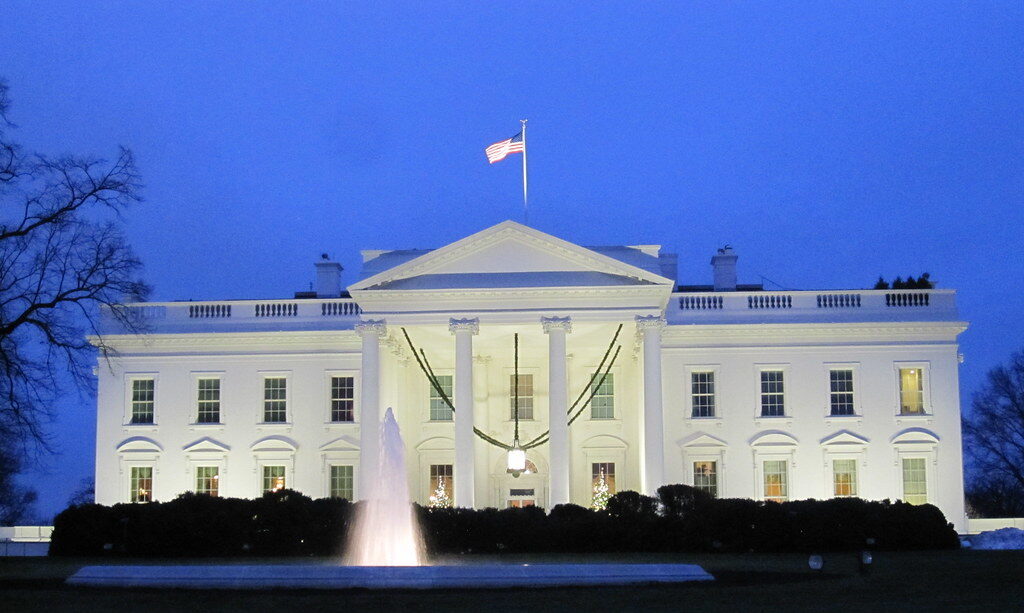Key Takeaways
- President Trump ordered demolition work to build a giant White House ballroom during a government shutdown.
- Historian Anna Applebaum called the project an unnecessary luxury in hard economic times.
- The new ballroom dwarfs the original 18th-century building and sparks widespread anger.
- Critics say the project highlights a stark contrast between government priorities and public needs.
Trump’s White House Ballroom Project Shocks Public
President Donald Trump quietly began demolishing parts of the White House to build a new 90,000 square foot ballroom. The move drew fury as the economy slows and a shutdown looms. Historian and journalist Anna Applebaum spoke out on MSNBC, saying most Americans will notice this “Marie Antoinette” style extravagance.
Why the White House Ballroom Matters Now
Anna Applebaum pointed out how huge the ballroom is. She noted it even dwarfs the classic 18th-century White House building. Moreover, she said Americans will spot this lavish addition while facing higher prices and government delays. In fact, she called it one of the greatest contrasts of our time.
The Cost of a Giant Ballroom
Even before the wrecking ball hit the walls, Trump had promised to keep the historic structure intact. Yet on Monday afternoon, crews began smashing through the old walls. Now, a lavish space will rise where part of the familiar East Wing once stood.
Furthermore, the project comes at a time when many face tariff-driven price hikes and stalled paychecks. Applebaum argued it makes no sense to spend millions on a gold-toned party hall when basic services are delayed. Instead of focusing on public needs, the White House ballroom shows a focus on private luxury.
Americans Notice the Contrast
On one hand, working families struggle with rising costs for food and fuel. On the other hand, the government funds an enormous party space. As a result, people feel a sense of unfairness. Applebaum said she is surprised more Republicans have not protested this project.
Also, she warned that this visible symbol of luxury will stick in people’s minds. They will remember that while their budgets shrank, the president built something grand for his own events. This contrast, she said, will fuel frustration toward Washington.
Why Critics Say It Feels Like Mar-a-Lago at Home
Some compare the new ballroom to Trump’s private Mar-a-Lago estate in Florida. Both feature gold accents and over-the-top style. However, this time it sits next to the public home of every American president. Critics believe this choice blurs lines between private wealth and public office.
Moreover, they see the demolition as a sign that no promise is safe. If the historic walls can come down today, nothing is off limits tomorrow. This sense of uncertainty fuels anger on both sides of the aisle.
Calls for Accountability Grow
Soon after the wrecking ball began, calls for oversight gathered steam. Lawmakers demanded details on the budget, safety measures, and historic preservation rules. Meanwhile, social media lit up with images of rubble and gold-leaf designs.
In fact, polls show a majority of Americans question why such a project proceeds during economic pain. They wonder if other priorities were pushed aside to fund a giant ballroom. As a result, some representatives pledged to introduce bills limiting future alterations.
What This Means for Future Projects
Looking ahead, the debate over the White House ballroom could shape rules on federal renovations. Many argue for clear limits on spending and design reviews. They want any major change to win broad support first.
Furthermore, activists call for more transparency. They say every dollar should go through public hearings. Only then can voters hold leaders accountable for lavish undertakings.
How You Might See the Impact
Every time you hear about higher costs at the grocery store, you might recall the Golden Ballroom project. Each new tariff on goods can remind you of funding redirected to lavish events. And as the shutdown drags on, the contrast grows sharper. People will see what their leaders built for themselves and question their own struggles.
FAQs
What is happening with the White House ballroom demolition?
Demolition crews began tearing down parts of the East Wing to make room for a new 90,000 square foot ballroom. The project replaces historic walls once meant to stay untouched.
Why are people upset about the White House ballroom project?
Critics call it an unnecessary luxury during a government shutdown and rising living costs. They feel it shows misplaced priorities and a lack of concern for everyday Americans.
Who is Anna Applebaum and what did she say?
Anna Applebaum is a historian and journalist. On MSNBC, she called the project a “Marie Antoinette” style extravagance. She warned that this visible symbol of luxury will outrank other government efforts in the public eye.
Could this project change how future renovations happen?
Yes. Many lawmakers and activists now push for stricter rules on federal building changes. They want clear spending limits, historic preservation reviews, and public input before any major work begins.

